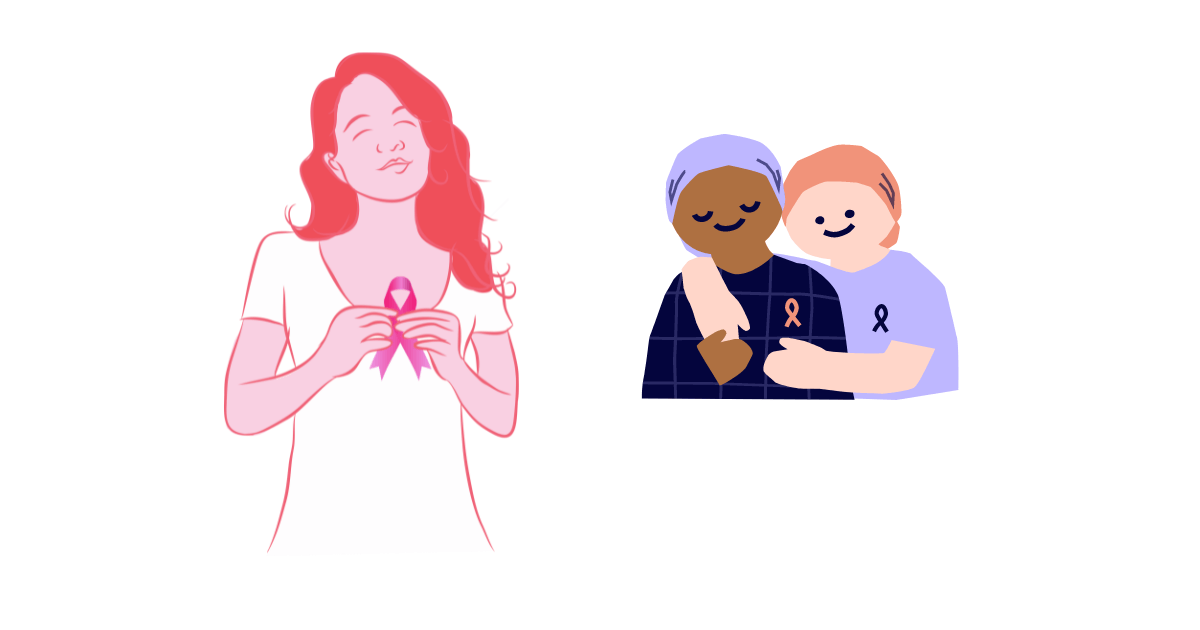Where Does Breast Cancer Spread? While breast cancer can affect any part of the body, certain areas are more susceptible to its spread known as metastasis. This article dives into the common destinations of metastatic breast cancer and explores the factors influencing its journey.

Where Does Breast Cancer Spread?
Most Common Sites of Metastasis:
Breast cancer most frequently spreads to these areas:
- Lymph nodes: These small, bean-shaped structures act as filters for the immune system, making them prime targets for cancer cells traveling through the lymphatic system. The armpit, collarbone, and chest lymph nodes are particularly vulnerable.
- Bones: The skeleton, especially the spine, ribs, and pelvis, offers fertile ground for breast cancer cells to settle and grow. This can cause bone pain, fractures, and other complications.
- Liver: This vital organ plays a filtering role in the body, increasing its exposure to circulating cancer cells. Liver involvement can lead to jaundice, fatigue, and other symptoms.
- Lungs: Similar to the liver, the lungs act as filters for airborne particles, making them susceptible to cancer cells that travel through the bloodstream. Lung metastases can cause difficulty breathing, cough, and chest pain.
- Brain: While less common, breast cancer can reach the brain, leading to headaches, seizures, and vision problems.
Factors Influencing Spread:
Several factors influence where breast cancer might spread:
- Type of breast cancer: Different types have varying propensities for metastasizing to specific organs. Triple-negative breast cancer, for example, is more likely to spread to the brain compared to other types.
- Stage of cancer: Early-stage cancers are less likely to have spread compared to advanced stages.
- Biological characteristics of the tumor: The tumor’s genetic makeup and growth patterns can influence its metastatic potential and favored site.
Remember:
- Metastasis does not change the type of cancer. For instance, if breast cancer spreads to the lungs, it remains breast cancer, not lung cancer.
- Early detection and treatment are crucial in preventing or delaying metastasis and improving treatment outcomes.
- If you have concerns about breast cancer or notice any suspicious changes in your breasts, consult a healthcare professional promptly.
Beyond the Basics: Understanding Breast Cancer Metastasis
While the previous section covered the most common sites of breast cancer metastasis, a deeper understanding necessitates delving into additional nuances:
Less Common Metastatic Sites:
While less frequent, breast cancer can spread to other areas, including:
- Skin: This can manifest as lumps, redness, or ulcers on the breast or other areas.
- Bone marrow: This can affect blood cell production and lead to anemia or infections.
- Adrenal glands: Located above the kidneys, these glands control hormone production, and their involvement can disrupt hormonal balance.
- Digestive system: The stomach, intestines, and other digestive organs can be affected, causing abdominal pain, nausea, and other issues.
Additional Considerations:
- Multiple organ involvement: Breast cancer can metastasize to multiple organs simultaneously or sequentially.
- Leptomeningeal metastases: This rare form involves cancer spread to the membranes surrounding the brain and spinal cord, causing neurological symptoms.
- Treatment implications: The location of metastasis influences treatment choices. For example, bone metastases might require targeted therapies, while brain metastases might necessitate specific drugs that can cross the blood-brain barrier.
- Research advancements: Ongoing research investigates the mechanisms of metastasis and explores novel treatments to target specific metastatic sites and improve patient outcomes.
Living with Metastatic Breast Cancer: Hope and Support
While a diagnosis of metastatic breast cancer can be overwhelming, remember that you are not alone. Many resources and support systems are available to help you navigate this journey:
Managing Physical and Emotional Challenges:
- Treatment side effects: Understand and manage potential side effects of your treatment plan, such as fatigue, pain, or neuropathy. Talk to your doctor about strategies to alleviate them.
- Emotional well-being: Address emotional challenges like anxiety, depression, or fear with counseling, support groups, or mindfulness practices. Remember that seeking help is a sign of strength, not weakness.
- Physical limitations: Adapt to any physical limitations caused by the disease or treatment. Explore occupational therapy, physical therapy, or assistive devices to maintain independence and quality of life.
Engaging in Treatment Decisions:
- Clinical trials: Consider participating in clinical trials to access promising new treatments and contribute to scientific advancements. Discuss the risks and benefits with your doctor thoroughly.
- Second opinions: Don’t hesitate to seek second opinions from other specialists to ensure you have a comprehensive understanding of your options and choose the treatment approach that best aligns with your goals and preferences.
- Advance care planning: Discuss your future care wishes with your loved ones and healthcare team. This empowers them to make informed decisions if you become unable to do so yourself.
Finding Support:
- Patient advocacy groups: Connect with organizations like the American Cancer Society, Susan G. Komen, or National Breast Cancer Coalition for resources, support groups, and educational materials.
- Online communities: Join online forums or social media groups to connect with others facing similar challenges and share experiences and encouragement.
- Counseling and therapy: Consider individual or group therapy to address emotional challenges and develop coping mechanisms.
Read more****
What Foods Help Prevent Breast Cancer or Reduce Your Risk?
Your article helped me a lot, is there any more related content? Thanks!
Incredible work!
Love this
You’re amazing
Thank you for your sharing. I am worried that I lack creative ideas. It is your article that makes me full of hope. Thank you. But, I have a question, can you help me?
Your point of view caught my eye and was very interesting. Thanks. I have a question for you.
I don’t think the title of your article matches the content lol. Just kidding, mainly because I had some doubts after reading the article.
Your point of view caught my eye and was very interesting. Thanks. I have a question for you.